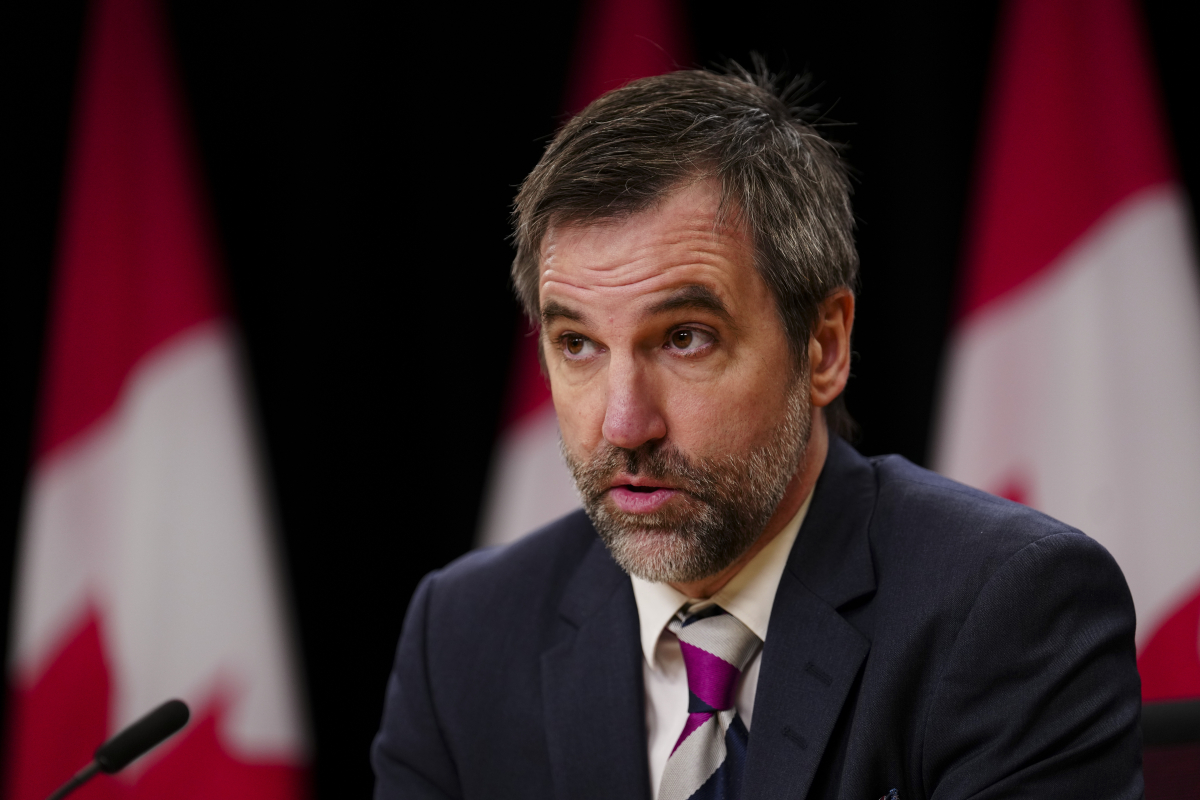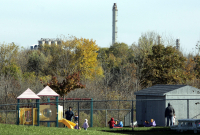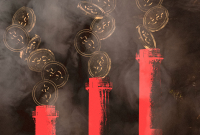Support strong Canadian climate journalism for 2025
You know things have really gone off the rails when the feds slap Ontario with a first-ever order on air pollution, wading into an area that, until now, has always been the province’s jurisdiction. That’s what happened last month with an extraordinary measure to curtail benzene leaks from INEOS Styrolution, a chemical company belching toxic fumes in the Sarnia area’s Chemical Valley.
The feds did this with the blessing of Ontario Premier Doug Ford, who typically bristles at attempts by the federal government to encroach on his turf — a testament to just how bad the leaks were and how badly the province has failed to contain them.
Benzene is a highly toxic carcinogen used to manufacture certain plastics. In late March, chemical plant leaks soared as much as 424 times higher than the acceptable limits. The air was so polluted that people in the nearby Aamjiwnaang First Nation fell ill and key buildings in the community were forced to close, including the band office, daycare and resource centre.
This was by no means the company’s first infraction. Unacceptably high benzene leaks from INEOS Styrolution have been recurring since 2019. The company has been issued four orders by the provincial government, instructing them to get emissions under control, the CBC reports. The company made plans to lower the levels, yet the leaks continued and INEOS was still allowed to operate for five more years.
And if that wasn’t bad enough for the people living nearby, we now learn benzene is not the only chemical fouling the air in Chemical Valley. Sulphur dioxide (SO2) levels leaking from a number of area plants are also off the charts. Commonly known as sour gas, sulphur dioxide causes choking, coughing and burning eyes and throats. Even short-term exposure to high concentrations of SO2 can harm the respiratory system of humans and animals, with even greater risks for those with existing respiratory issues.
Turns out the Ontario government has known about this for years, as well. In 2022, the province passed new regulations aimed at reducing emissions by 90 per cent in the Sarnia area. It’s clear that didn’t happen, again leaving people choking on a mix of toxic fumes.
Despite the ongoing infractions, the federal order dealt only with benzene from INEOS , but ignored the equally egregious SO2 pollution emanating from various companies. Our reporters have been trying to find out why, but so far, have not got clear answers.
It’s easy to imagine why governments of all levels would be loath to crack down on too many companies in Chemical Valley. They are, after all, large employers, the jobs are well-paying, and throwing people out of work is never a good look.
So, it’s quite possible the benzene order, which applies to all companies but, practically speaking, affects only one, was tailored as a shot across the bow for other polluters.
That must be cold comfort to the Aamjiwnaang First Nation, who have been dealing with air pollution for so long, they track air quality measurements and post reports on a community Facebook page. After so many years of lax enforcement, it’s little wonder they publicly blew the whistle on the benzene leaks at April’s national plastics treaty negotiations, a move designed for maximum government embarrassment.
“This is not acceptable, nor is it an isolated event,” said Aamjiwnaang First Nation elected councillor CJ Smith-White, in a statement at the time. “Our people, the original people here, the Anishinaabe, have been exposed to environmental racism for more than 100 years.”
This is no exaggeration. After years of contamination, the nearby St. Clair River was designated as a binational area of concern in 1987. Cleanup efforts have been underway for multiple contaminants for more than three decades and with luck, the lingering mercury pollution will capped this summer.
Harm wreaked by industry on First Nations land is a shameful colonial legacy. And while we can’t undo past mistakes, we certainly should be cleaning up as best we can.
It’s unconscionable, however, to allow the harm to continue. In the past year alone, we have learned about Imperial Oil’s oilsands tailings pond leaks that, save for one email, no one bothered to tell the local First Nations about. And just last month, we learned that existing mercury poisoning in the English-Wabigoon River system in Grassy Narrows is being exacerbated by ongoing discharge from a pulp mill.
Canada has pollution limits for air and water. But all too often, our provincial governments fail to enforce them. Federal Environment Minister Steven Guilbeault stepped in twice last week, once on benzene and again, announcing a toxicity review of oilsands tailings. But in Sarnia, he only went part way. Perhaps, that’s the best deal he could make with Premier Doug Ford, who is not exactly the environment’s best friend. In a perfect world, the feds wouldn’t have to make deals about health and safety. There’s room for a greater federal role here. Someone has to protect the health of our air and water.






Comments
Still waiting for the feds to come clean about the cause of the recent "acute lethality" event at their privately-run, 80-year-old nuclear research facility on the Ottawa River upstream from Ottawa - see https://www.cbc.ca/news/indigenous/algonquin-leaders-chalk-river-sewage…
Still waiting for the feds to come clean about the cause of the recent "acute lethality" event at their privately-run, 80-year-old nuclear research facility on the Ottawa River upstream from Ottawa - see https://www.cbc.ca/news/indigenous/algonquin-leaders-chalk-river-sewage…
For the record, sour gas is not sulphur dioxide (SO2), but generally natural gas (or any other gas) with measurable amounts of hydrogen sulphide (H2S). The latter is highly flammable and toxic even at low concentrations (not to make SO2 sound safe either).
Good one Thomas - H2S is deadly. If you are near an abandoned or orphaned gas well and the nearby cows are dead - Run Away!